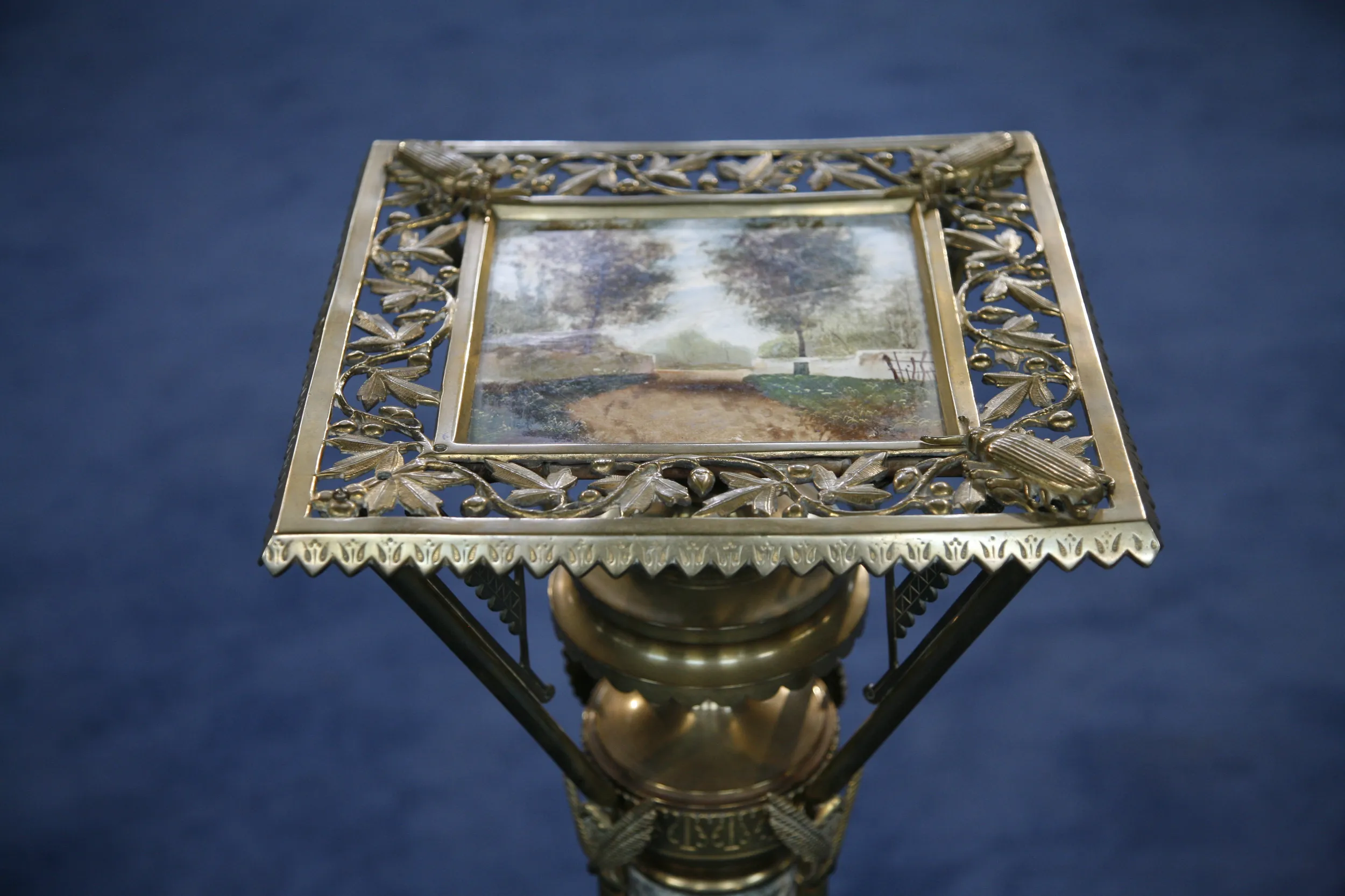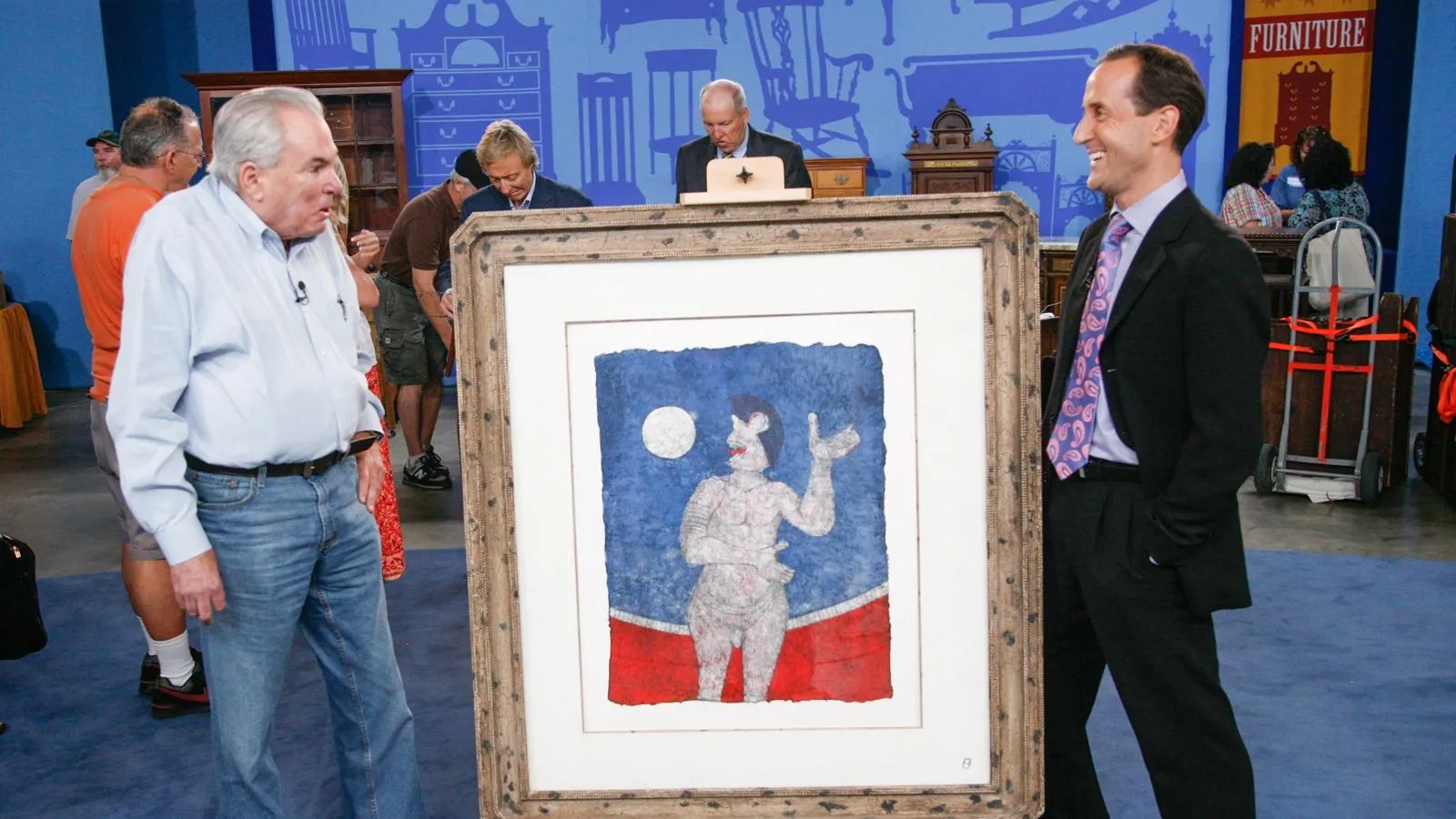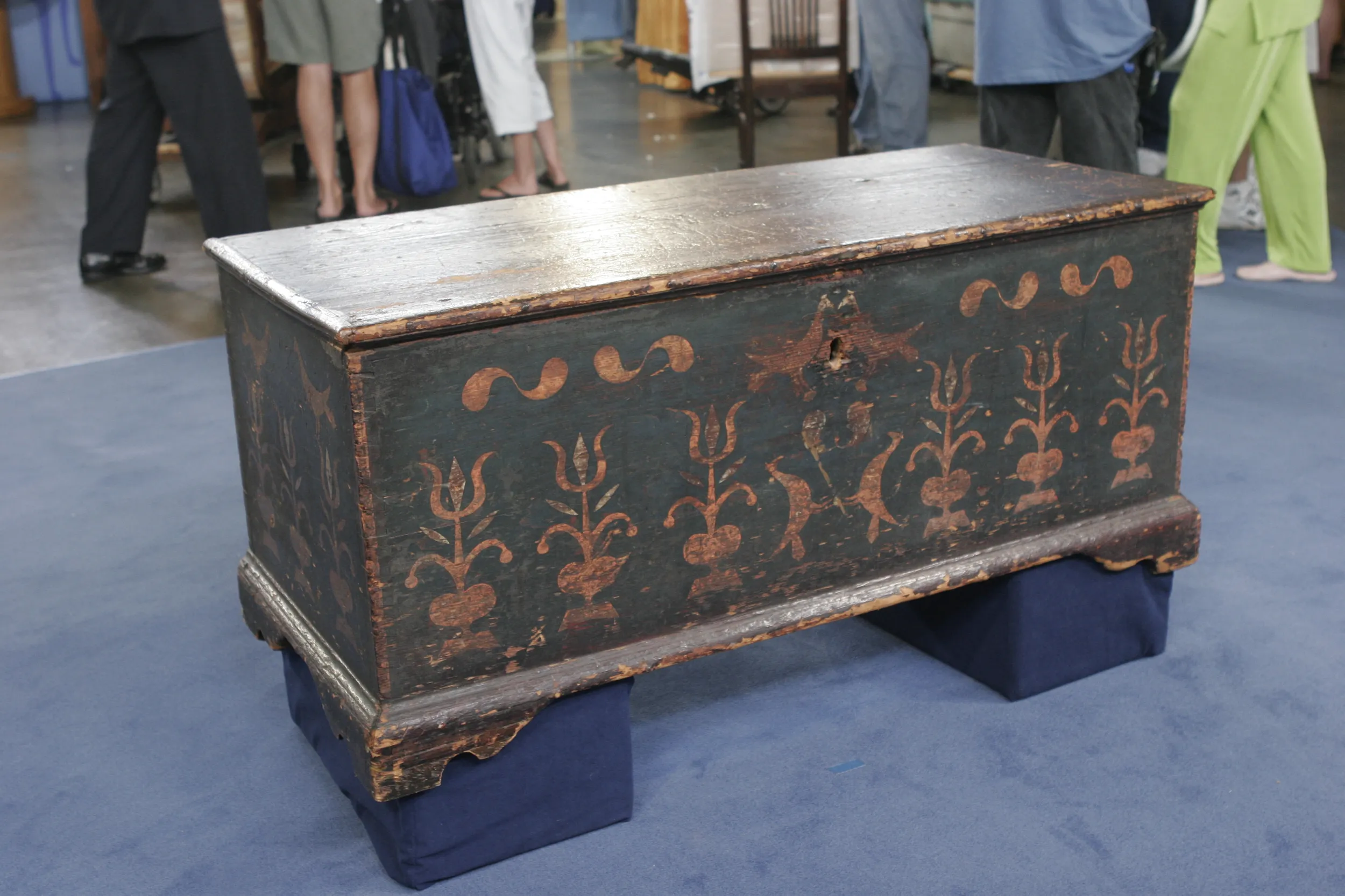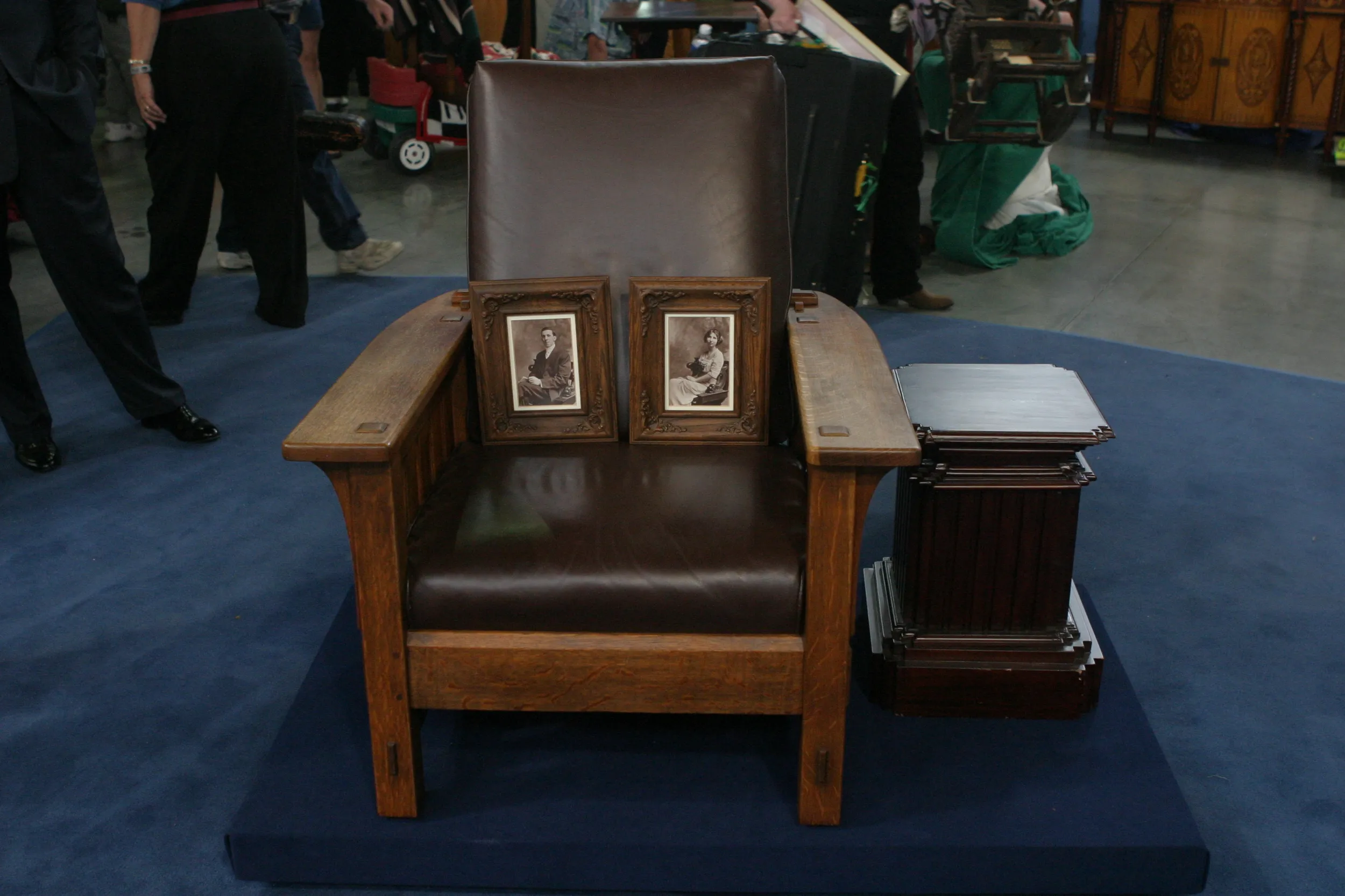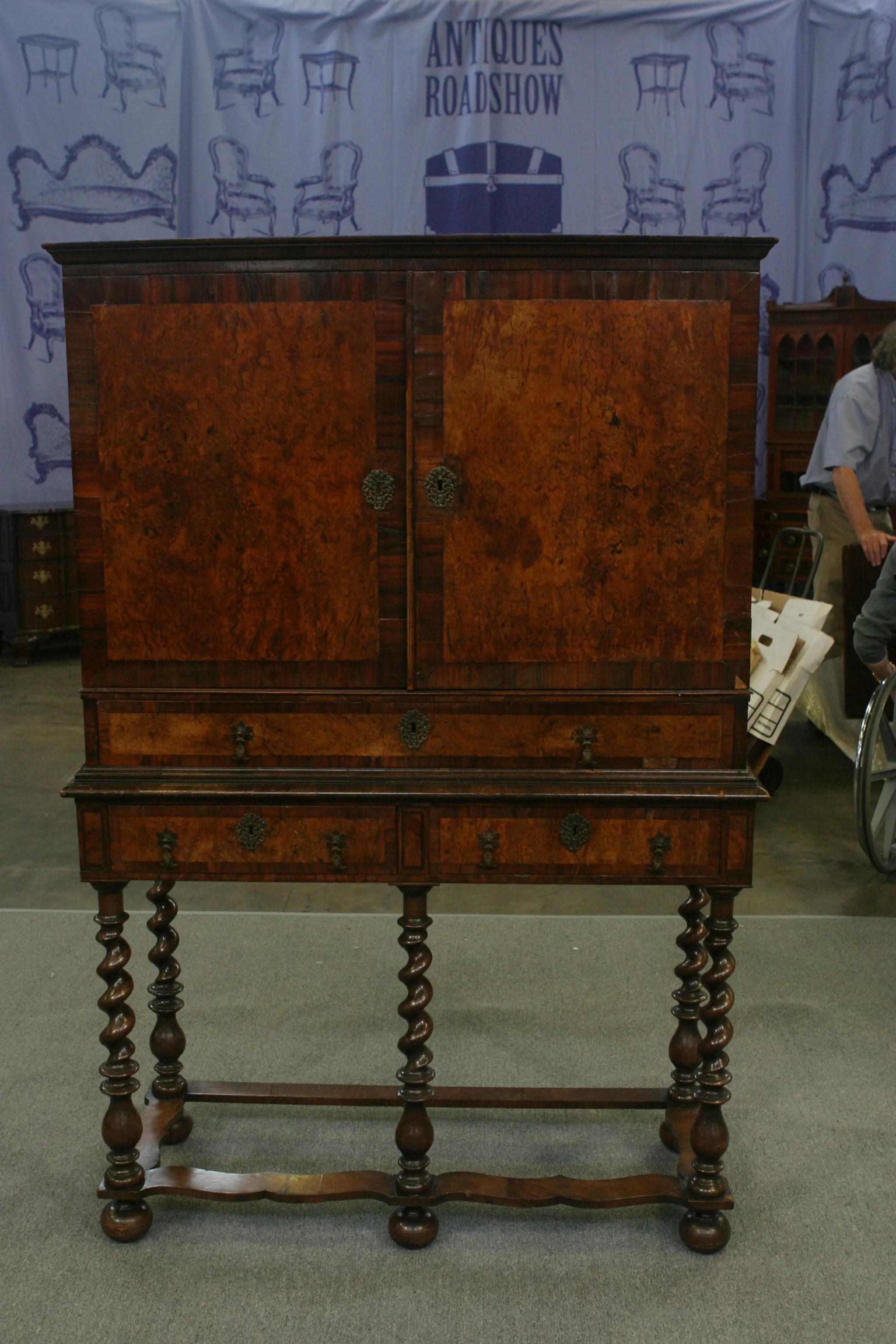GUEST: I got it over in, uh, Kerrville, Texas.
APPRAISER: Mm-hmm.
GUEST: Uh, about 12 or 14 years ago, a friend of mine and I got a brochure in the mail of a moving sale.
APPRAISER: Mm-hmm.
GUEST: I found this there and a number of other things. In fact, we just came down in a little pickup and thought we'd pick up a few things and go home. Things, uh, uh, got a little out of hand, so I went and rented a U-Haul trailer.
APPRAISER: Oh, dear. (chuckles)
GUEST: And, uh, we bought some beautiful paintings and some small pieces of furniture and this and that.
APPRAISER: And what did you pay for the plant stand?
GUEST: Uh, I paid $400 for it.
APPRAISER: $400?
GUEST: It was almost bl... In fact, it was black. The lady had a cat, and the cat had broken many of the things in the house.
APPRAISER: Yeah.
GUEST: Hence, this has a broken tile.
APPRAISER: Yeah.
GUEST: I hope I didn't ruin it by polishing it a little bit.
APPRAISER: Even though you did some polishing...
GUEST: Mm-hmm.
APPRAISER: ...you didn't do irreparable damage.
GUEST: Yeah, too much?
APPRAISER: No, you didn't.
GUEST: Yeah. (chuckles)
APPRAISER: This brass work was produced, really, most of it in Connecticut. And this probably done by the Bradley and Hubbard Factory, or Parker Brothers was another firm that, uh, that worked and created these what I call Aesthetic Movement objects. And it looks alive to me, starting from the very bottom...
GUEST: Mm-hmm.
APPRAISER: ...of this, uh, piece, with these paw feet, and moving up to, uh, bird wing legs.
GUEST: Mm-hmm.
APPRAISER: You can see there's a snake that's coiled...
GUEST: Right.
APPRAISER: ...around the shaft. And the base also has this wonderful combination of brass, as you mentioned, uh, but also pottery. And it's all painted with wonderful pictures of nature, uh, on it.
GUEST: Mm-hmm.
APPRAISER: 'Cause, of course, that's what we think of when we see, uh, think about the Aesthetic Movement. So there are butterflies and flowers and trees, and it's just wonderfully rendered in this pottery shaft. The top, as well... It's got a little bit missing on it.
GUEST: Yeah.
APPRAISER: Here, you can see the scarab that is missing on the side. And also, the pottery, uh, tile itself, it's almost as though it were a Barbizon painting.
GUEST: Mm.
APPRAISER: A French painting from the late 19th century, which is when, uh, this piece was made, probably around 1880. I would get this...
GUEST: Reproduced?
APPRAISER: Yes, gingerly, and with someone very good, a metalsmith, to reproduce in brass. And you would place that in and, and really bring the whole together again.
GUEST: Mm-hmm.
APPRAISER: And you could probably also find someone to restore the pottery top.
GUEST: Mm.
APPRAISER: Any idea of its value, or...
GUEST: Oh, I have no idea. I just hope it's worth more than $400. (laughs)
APPRAISER: I think we're safe. I think we're safe.
GUEST: Yeah?
APPRAISER: I would say for auction, in this condition, not restored, I would put an estimate of $6,000 to $8,000 on it.
GUEST: Oh, my goodness, well... I don't know how attached I am to this stand now. (laughs).
APPRAISER: Do a little work on it.
GUEST: Uh-huh.
APPRAISER: Maybe we're looking at, you know, a $10,000, uh, object.
GUEST: Goodness, gracious.

